Introduction
Cows hold a special place in India and its culture. According to Sanātana Dharma, God is manifested through many forms like the 5 elements of nature (Fire, Water, Wind, Earth & Space), some animals (like the Cows, Elephants, Snakes etc.), trees/plants (Neem, Vilvah, Tulasi), celestial beings and even some geometric patterns (different Yaṅtrā-s). Each of this manifestation of God has its own place in the Dharmic tradition and one such animal enjoying immense significance and respect is our humble cow. In our Dharmic tradition, each deity/form has a story behind its existence and our cows have their own stories too.
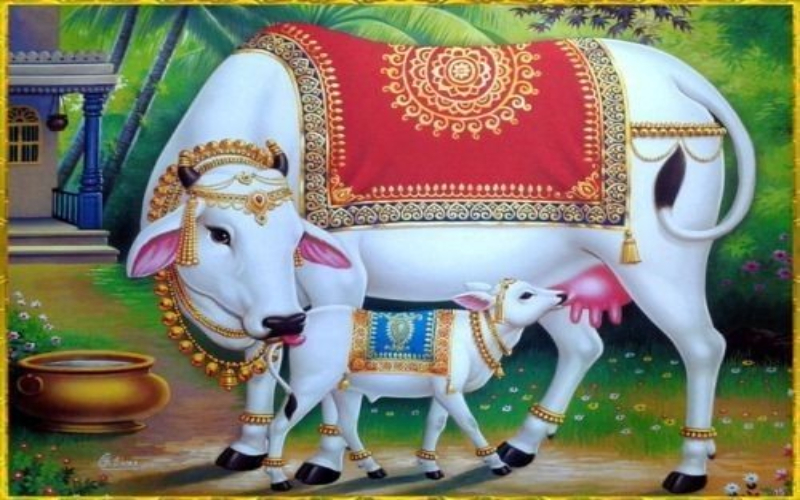
The Origin of the Divine Cow – ‘Kāmadhenu’
King Indra was disrespectful once to a sage called Durvāsā and as a result was cursed by him and lost his kingdom. Indra felt sad and wanted to earn his kingdom back. He approached Lord Viṣṇu who suggested that he approach the demons to help him churn the ocean of Milk. This would help the Devā-s partake the Amṛta (which when consumed would make them immortal and in turn help them win their kingdom back).
Listening to the advice of Lord Viṣṇu, the Devā-s, led by Lord Indra met the demon king and after much discussion, both of them agreed to share the Amṛta equally.
In order to churn the ocean, they needed a lot of help. They approached the Mountain Mandāra and the Snake God – Vāsukī to help them. They agreed to the terms put forth by the Devā-s. The Mountain Mandāra became the churning stick and the snake God, Vāsukī acted like the rope wounding itself around the mountain. During this process, in order to avoid the mountain from sinking, Lord Viṣṇu took the form of a Tortoise (Kūrmāvatāra) and held the mountain in place.
During the churning process, first came the deadly poison called Halāhal. This poison started to spread all over the ocean, and it was so deadly that it was a threat to the lives of all living beings. After prayer to Lord Śiva, he collected all the spilt poison and consumed it in order to save the world. (Pārvatī pressed Lord Śiva’s neck to make sure that the poison would not flow to his stomach/blood stream causing it to stay in his throat instead. Thus, Lord Śiva also was known as Nīlakaṇṭha – Blue throated).
Once the poison was all gone, they started to churn the ocean again. Now out of the ocean came the Divine Kāmadhenu (a wish fulfilling cow – considered as the mother to all cows, present). Along with Kāmadhenu out came Airāvata (white elephant), Kalpavṛkṣa (a wish fulfilling tree), Goddess Lakṣmī, Uccaiśravā (white horse) and lastly Dhanvantari (The Divine physician) with a bowl of Amṛta.
The story ends with Lord Kṛṣṇā creating a distraction and the Lord Indra tricks the demons and distributes the Amṛta only among all the Devā-s.
Thus, Kāmadhenu is the ‘Mother of all Cows,’ and in Vedic scriptures, she is also described as a miraculous cow that provides her owner with whatever he desires. Although Kāmadhenu is not independently worshipped as a Goddess in temples, she appears in many scriptures and stories.
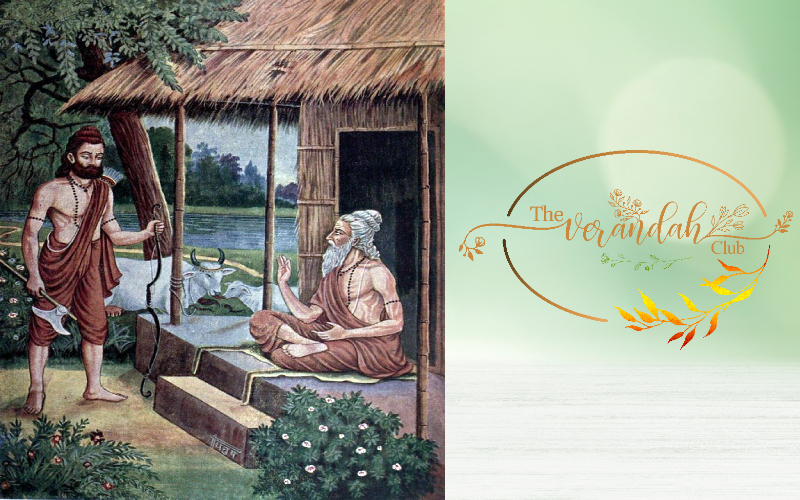
In Mythology
On the banks of River Narmadā, lived a sage called Jamadagni and his wife, Reṇukā. They had four sons and the youngest was called Paraśurāma (an Avatāra /reincarnation of lord Viṣṇu). Their family was blessed with Kāmadhenu - a symbol of abundance. Once, when the sage and his four sons were away from their hermitage, few Kṣatriyā-s passed by the hermitage. Reṇukā being considerate, offered them delicious milk and dishes from Kāmadhenu. The warriors wanted such a cow to be possessed by their king and stole the cow from the hermitage. Reṇukā was sad when her sons arrived. Paraśurāma was enraged by this act and killed the entire Kṣatriyā clan and brought back their family cow – the Kāmadhenu.
Kāmadhenu and her calf, Nandinī, are also mentioned in a Sanskrit poem, ‘Raghuvamśa’ written by poet Kāḷidāsa. This poem narrates all the stories related to the Sūryavamśa dynasty to which Lord Rāma belonged to.
Lord Rāma’s father was Daśaratha who was born to King Aja. King Aja’s father was the great king Raghu – after whom the dynasty was known – Raghuvamśa. King Raghu’s father was King Dilīpa. It is during King Dilīpa’s reign that there is a mention of the divine cow – Kāmadhenu and its calf Nandinī.
The story goes, king Dilīpa ruled the kingdom of Ayodhyā. He was a just and an able king who was adored and respected by all the people of his kingdom. He was taught by the great sage, Vaśiṣṭha and he mastered the art of warfare and diplomacy. He married Sudakṣiṇā and lived happily. However, years passed by, but they had no children. The king and the Queen were worried and approached sage Vaśiṣṭha.
The great sage said that King Dilīpa did not have a child because of the curse of Kāmadhenu. He further added that King Dilīpa has once visited Lord Indra in the heavens and had rushed back to his duties on earth without paying respects to the Holy Cow, Kāmadhenu. It was the curse of the holy cow that the king had no children. The sage further continued that the curse can be lifted if the Royal couple took care of Kāmadhenu’s calf – Nandinī. The King and the Queen thanked the Sage and visited Nandinī and looked after the calf very well. The Queen performed pooja every day and made fresh garlands of flowers for Nandinī. This went on for 21 days.
One day, Nandinī wandered deep into the forest and King Dilīpa followed her. Suddenly a Lion appeared and threatened to eat the Cow. The King could not move his hands or legs to get his sword or his bow. The King’s arms froze. He offered himself and begged the lion not to eat Nandinī. Suddenly, the lion disappeared and Nandinī spoke. She said she was very pleased with the devotion of the royal couple and the curse was lifted. The king bowed to Nandinī and went back to his kingdom.
It is said that after a year, the king and the Queen were blessed with a baby boy whom they named Raghu. He became a great ruler that even now Lord Rāma is referred to as belonging to Raghuvamśa – ancestry of Raghu.
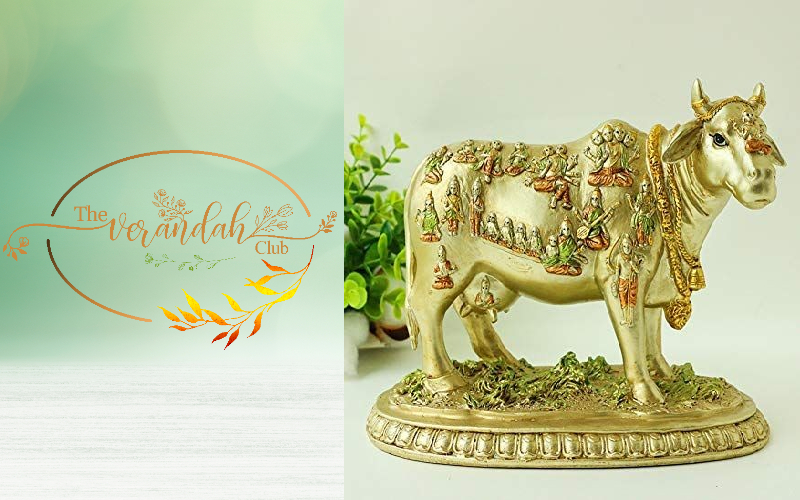
Portrayal of Gods inside the Cow
Cows are revered so much that all the Gods are believed to reside inside the body of the holy cow – Kāmadhenu. The 4 legs of the cow are said to represent the 4 Vedas on which our tradition is based on (to be as strong as the enduring Himālayas). The horns represent the Triune Gods with Brahmā residing at the tip of the horn, Lord Viṣṇu at the middle and Lord Śiva is represented residing at the base of the horn. Also, the eyes are the Sun and the Moon Gods and, in her shoulders, reside the Fire God – Agni and the Wind God – Vāyu. Lord Indra is said to reside in the neck.
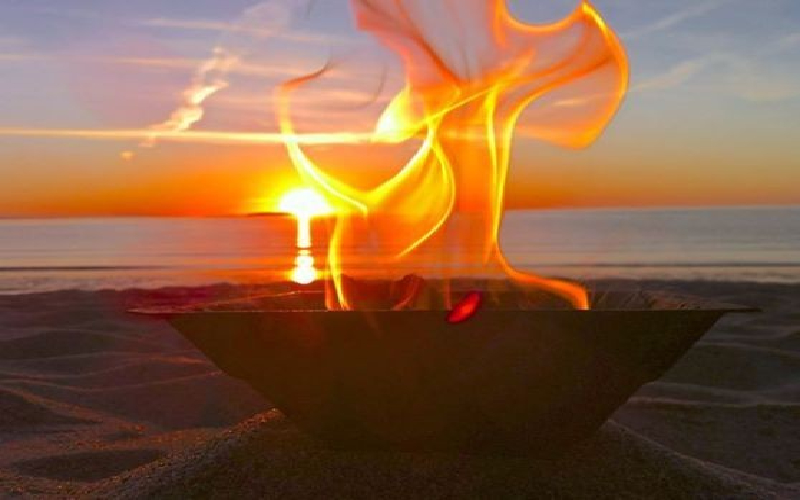
Yagnas & Poojas
In the Hindu tradition, Cow’s milk and its products are extensively used. The ghee is an indispensable part of any Pooja or Yagña. These Yagña-s are conducted by Brahmin priests and sometimes the Kāmadhenu is also referred to as Homadhenu by the priests. The Homā is the holy fire. The dung of the cow is dried and made into dung cakes and are extensively used for performing Homā-s /Yagña-s. Also, the Cow’s urine called ‘Gomiyam’ is an essential component during the Yagña-s. Thus, for performing a Yagña, the by-products of Cow are used extensively.
Simple Homā-s, like the Agnihotra (The origin of which is said to be in Āyurveda) are practiced widely in houses all over the world. Agnihotra is the process of purifying the atmosphere during the sunrise and the sunset. This is a 10-minute ritual which uses a copper pot (shaped like a pyramid) as a base to perform the pooja. Dry cow dung cakes and ghee are used to light the fire and at exactly the time of sunrise and sunset, brown rice is mixed with ghee is offered to the fire along with a 2-line mantra. The benefits of performing Agnihotra are tremendous, and one can research the same. Now, Agnihotra is followed in all the western countries as well.
(To know more about Agnihotra, click here)
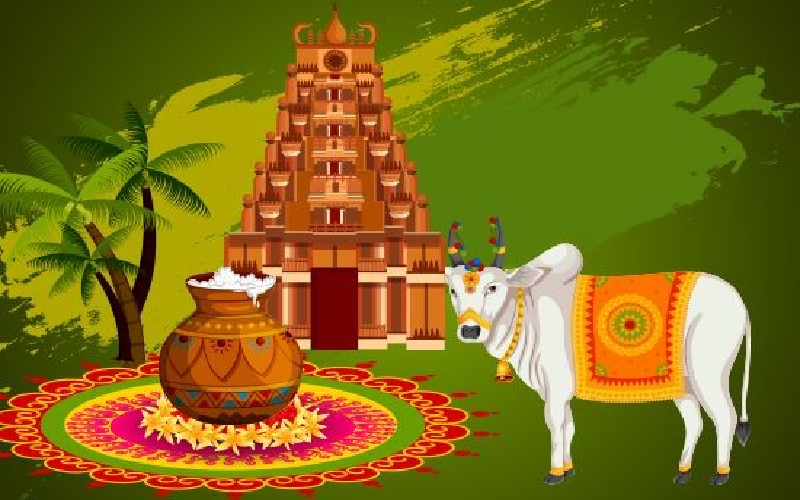
Gopūjā
‘Gopūjā’ means worshipping the Kāmadhenu – Cow. It is said that performing a Gopūjā will eliminate all the negative vibrations and spread health and happiness in a household. Worshipping cows is a strong Hindu custom and it is practiced even now in many households having cows.
The first step is to bathe the cows. Once they are bathed and cleaned, they are smeared on their head and hooves with holy Turmeric water. They are then decorated with garlands, flowers and tilak is applied on the forehead, hooves and horns. Pūjā-s are then performed (sometimes with a qualified Pujāri or sometimes the family members show Āratī and the incense stick) and finally the Cows are fed juicy grasses or fruits.
Godhāna
The Word ‘Go’ means Cow and ‘Dhāna’ means to the act of Gifting or Donating. Godhāna refers to the act of gifting/donating a healthy milking cow and its calf to a deserving person (who would take good care of the cow). Godhāna is believed to be one of the highest, most auspicious ritual that a human being can perform in his life.
As per our Hindu religious text, 'The Garuda Purāṇa,' when a human being dies, the soul of the person has to make quiet a treacherous journey. on its way, the soul will be faced with crossing of a river called Vaitaraṇī. It is believed that the river will look pleasant and beautiful to the soul of a righteous person or the one who has performed Godhāna in their lifetime. For those who have lived an immoral life, on the other hand, the river will look dark, treacherous and full of poisonous creatures. It is believed to be difficult to cross the river.
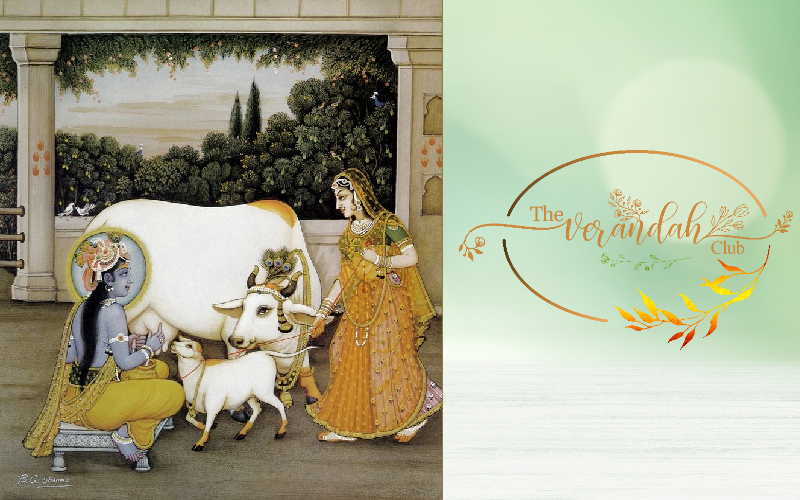
Cows and Agriculture
Agriculture is the backbone of India, and the cows and oxen are indispensable part of a farmer’s life. The oxen were extensively used to plough the fields in ancient times. The oxen while, ploughing the fields would urinate and make the fields fertile. Before the invention of automobiles, bullock carts were used as a mode of transportation of food and human beings.
The cows provided milk and other dairy products for the household. The Cow dung was and is still used to make manure like the Pañcagavya (which is made up of 5 ingredients from cow – like dung, urine, milk, ghee, curd). The products obtained from the cow acts as both a manure and as a pesticide for the farm.
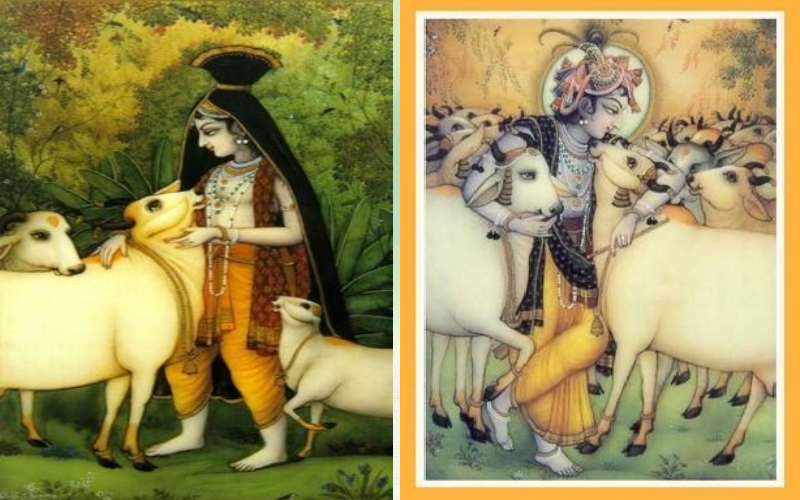
During the olden days, when the cows were free ranging, the rearing of the cattle was a family affair. It is believed that when the family members stroked and played with the cows, the cows would identify any deficiency that runs in the family and when let out every day to graze, the cows would eat the herbs and plants accordingly to fulfil the nutritious requirement of the family. Thus, the life and livelihood of the farmer were intertwined with the cows that they were revered and celebrated from time immemorial.
Also, in order to pay respect to the cattle for helping humans live a comfortable life, ‘Maattu Pongal’ is celebrated even till this day. The third day of the Harvest festival, Pongal, is dedicated to the cattle. On this day, the people bathe the cows and paint their horns. They apply ‘Tilak’ (Kumkum, turmeric) and decorate their cows and oxen with garland of flowers and sometimes anklets. The people then perform Āratī and special Pūjā-s for their cattle.
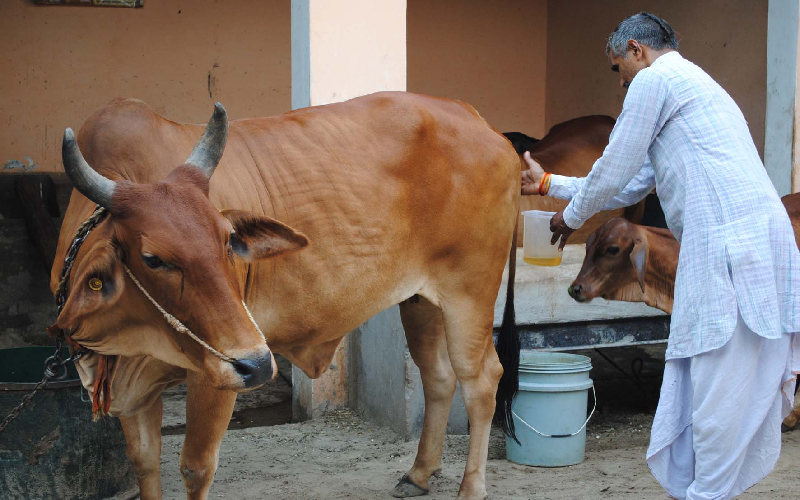
Patents on cow’s urine
Modern science and the western countries are slowly looking up to the Indian way of living and conducting many research on the ancient belief system and practices of India. A couple of years ago, the US multinational companies have obtained patent for Cow’s urine as it is proved to act as a bioenhancer and an antibiotic which has anti-fungal and anti-cancer properties.
Thus, to conclude, the cow is the mother to mankind. We owe huge respect and love towards the humble cow. Her milk helps to sustain the life of many species including that of a man. Her dung is used for Yagña-s, Pūjā-s and carries many medicinal significances. Her urine is said to cure sickness and at last, when she dies, her hide is used to keep us warm. So, she is indeed an animal to revere, look up to and protect.
NEXT ARTICLE
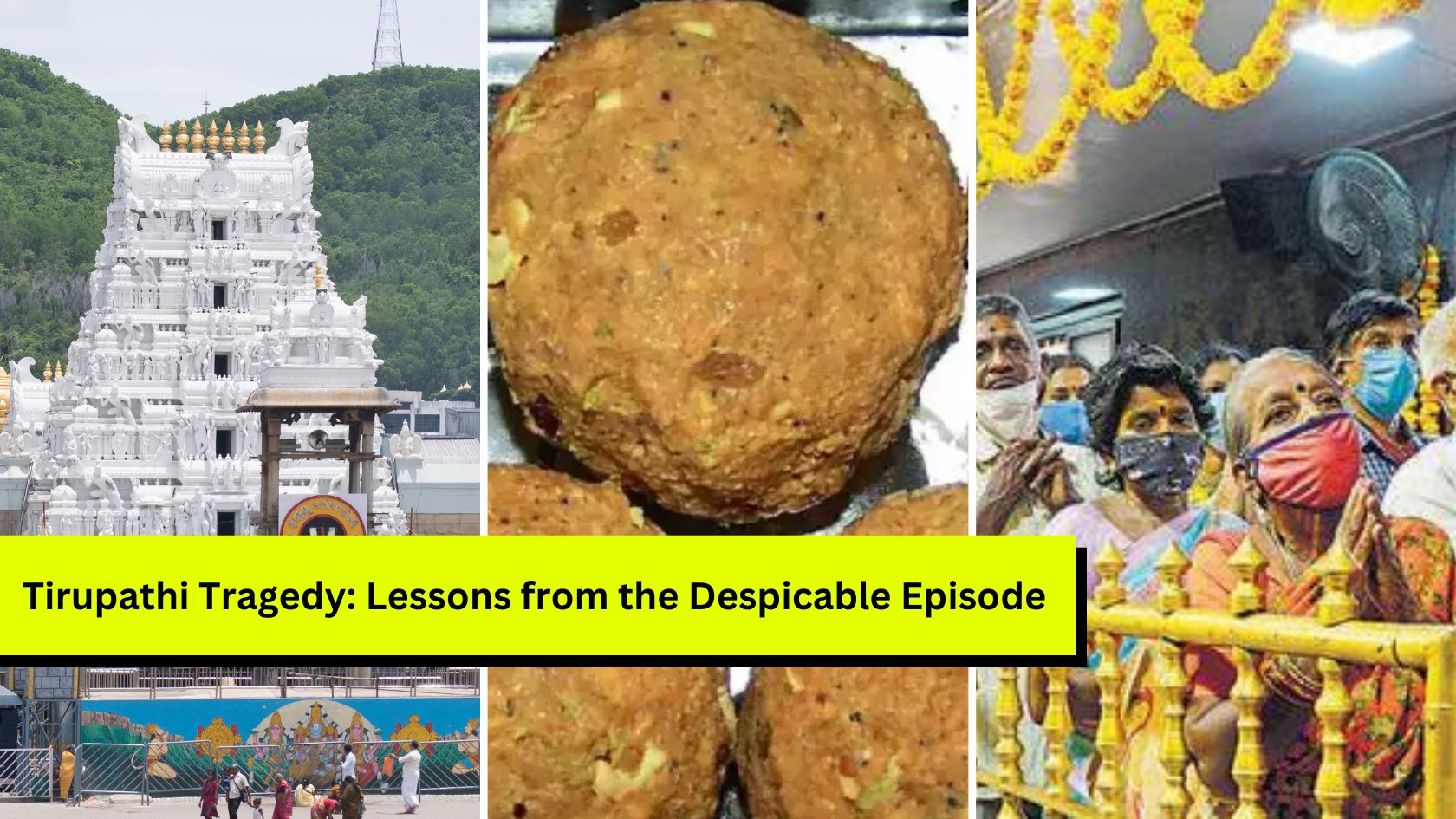
The Venkateshwara Swami Temple in Tirupati is among the holiest places in the world for Hindus. Millions of people throng the temple every year to get...
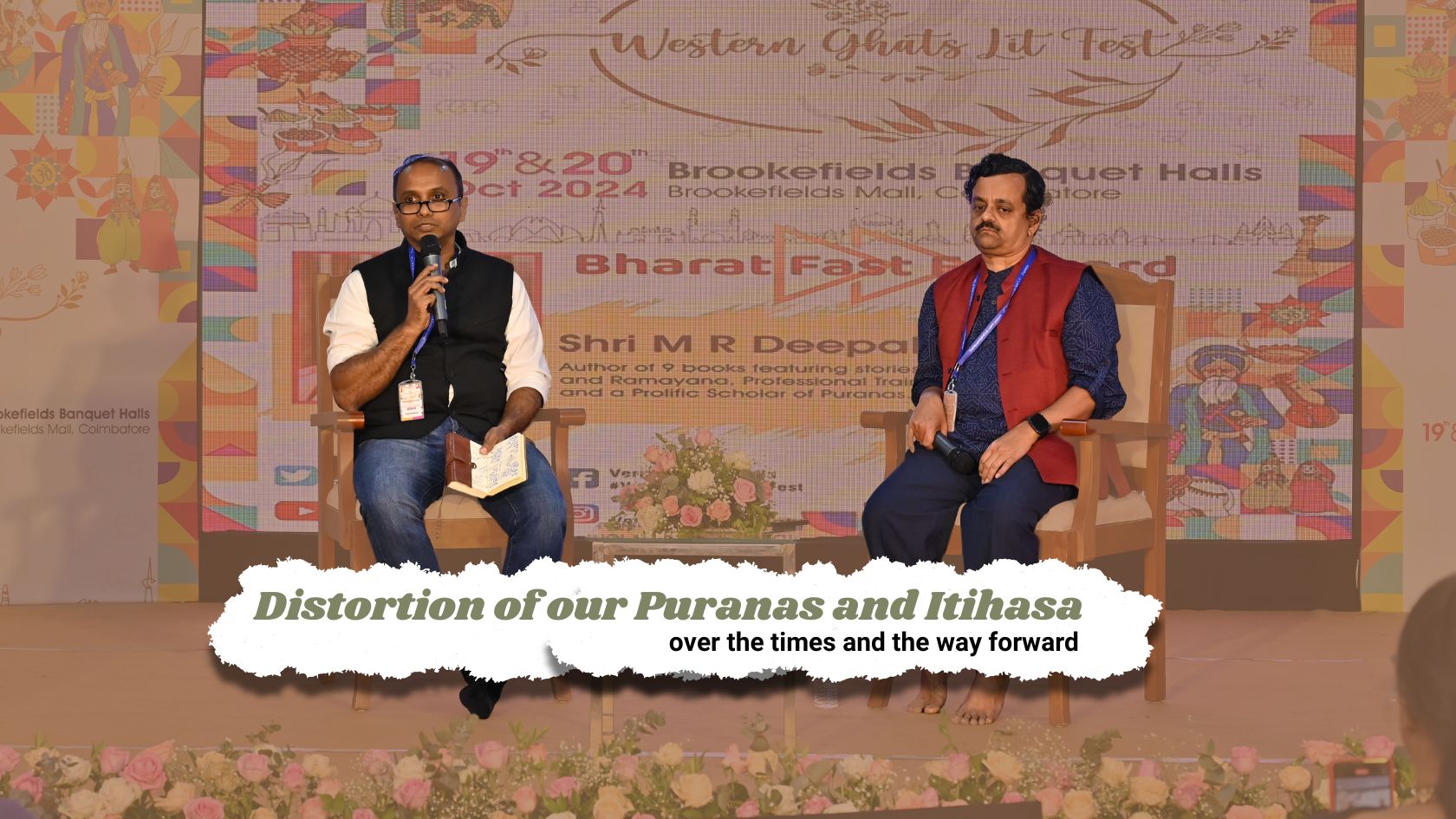
It is a sad reality that our Itihasa and Puranas have been subject to severe distortion over the years. This is not surprising considering how even th...
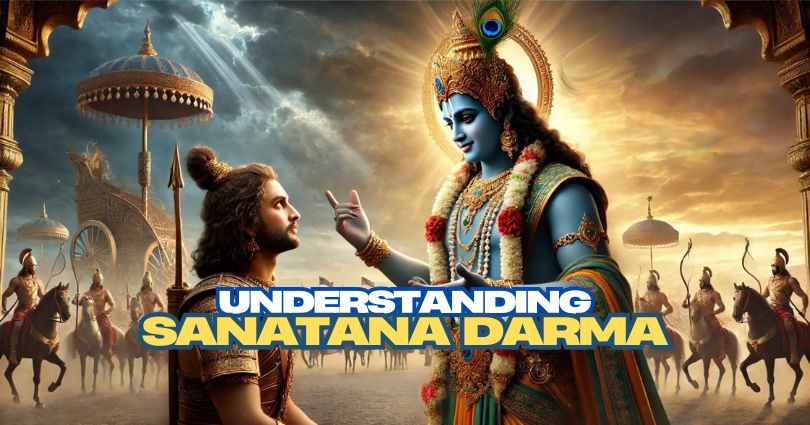
The holy land of Bharat follows Sanatana Dharma. The word Sanatana Dharma is a Sanskrit word meaning, “Eternal law”. It is the indestructible ultimate...